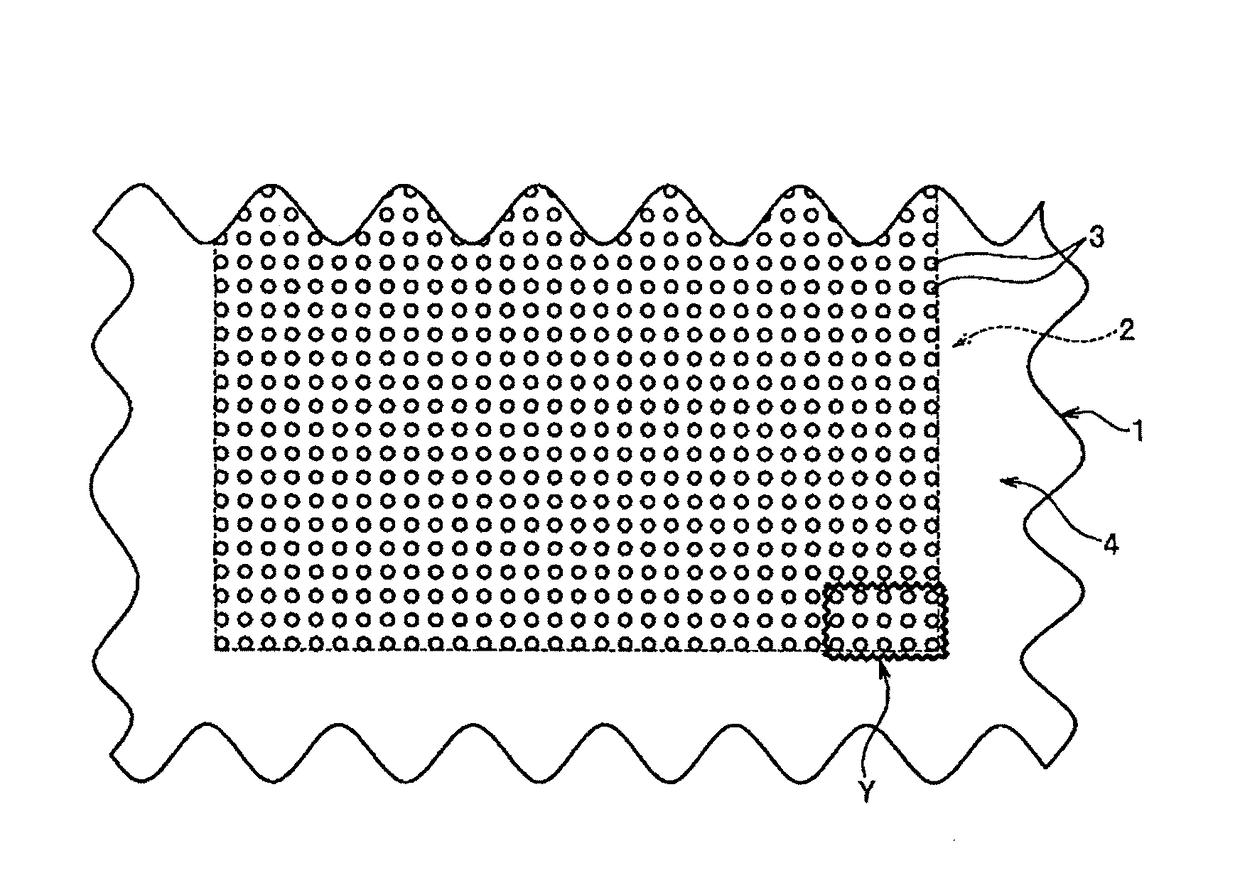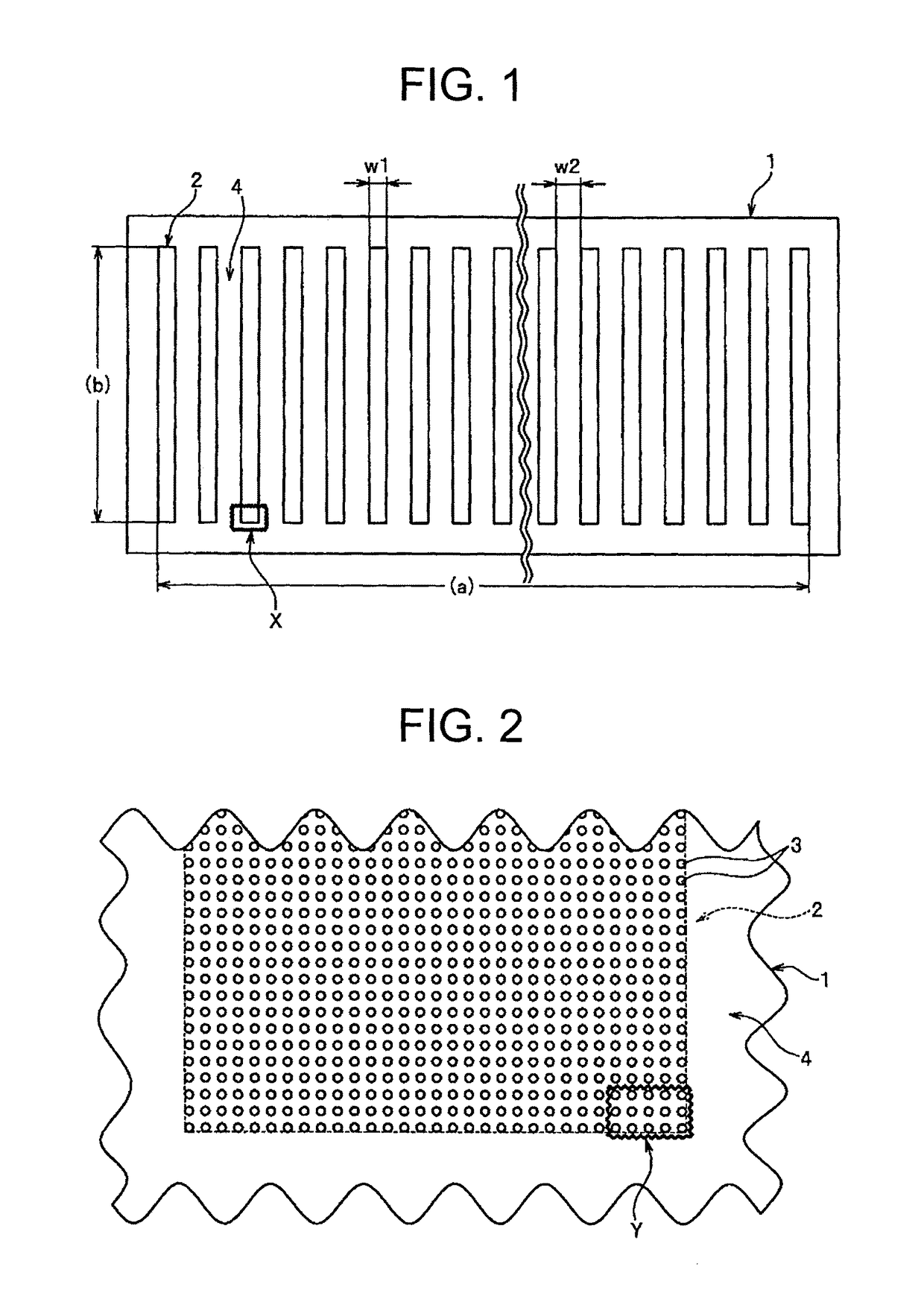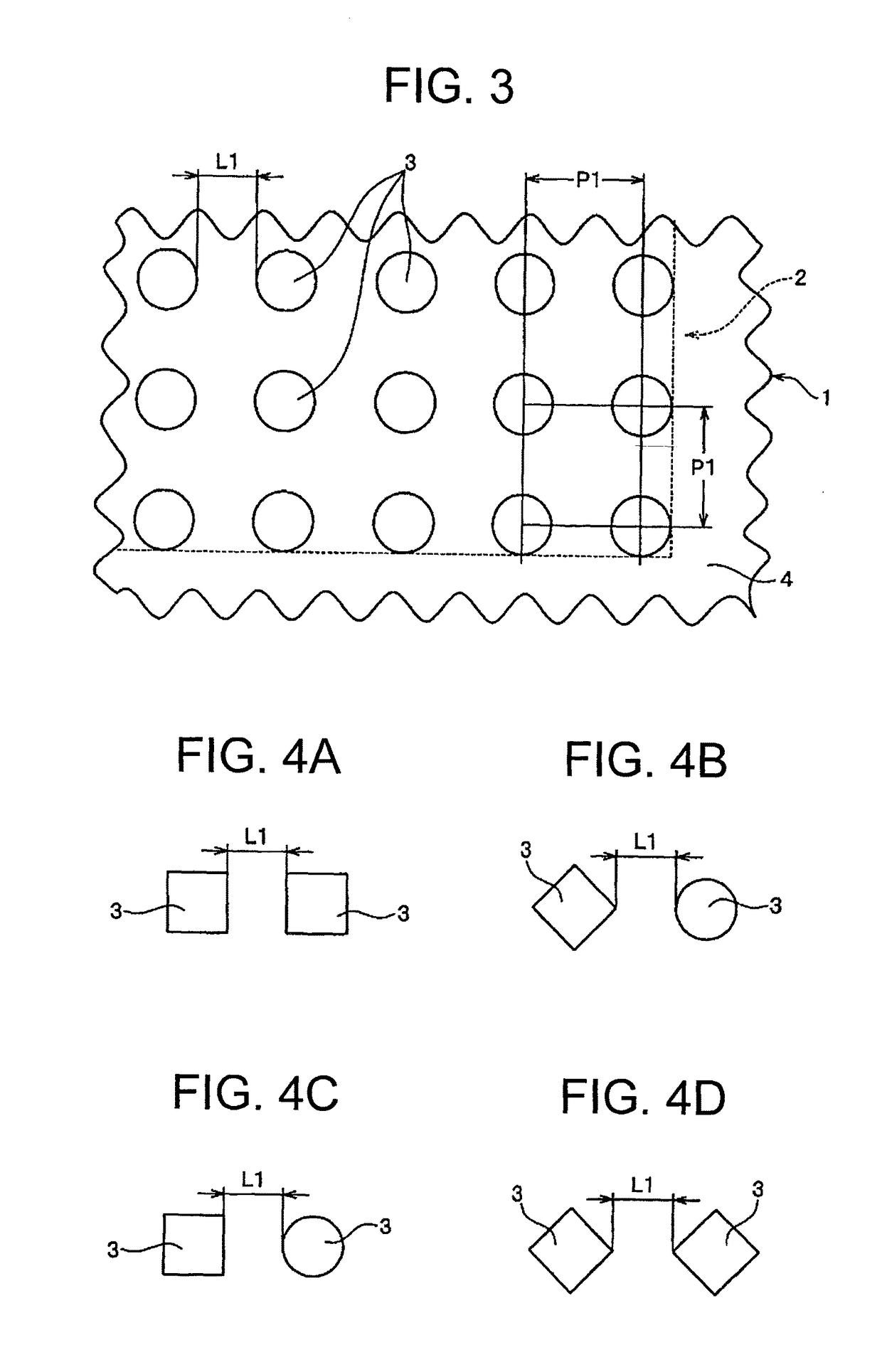Process for producing a fibrous bundle via a spinning nozzle
a spinning nozzle and fibrous bundle technology, applied in the field of spinning nozzles, can solve the problems of not being at a level that adequately responds to the needs of nanofibers, the limit of thinning the fiber diameter of about 2 m, and the cost increase, and achieves the effects of low cost, high efficiency and low adhesion
- Summary
- Abstract
- Description
- Claims
- Application Information
AI Technical Summary
Benefits of technology
Problems solved by technology
Method used
Image
Examples
example 1
[0158]A spinning nozzle with a hole density of 1,111 holes / mm2, ejection hole area of 176.6 μm2, ejection hole inter-outer edge distance of 0.015 mm, perforated part width of 1 mm, inter-perforated part distance of 2 mm, number of perforated parts of 30, and total number of holes of 1.17×106 holes was created using nickel as the material by Semtech Engineering Co., Ltd. by the electroforming method. The ejection hole arrangements are as shown in FIGS. 1 to 3.
[0159]A spinning dope was prepared with 16% by mass polymer concentration by dissolving a polymer of 0.200 specific viscosity consisting of 91% by mass of acrylonitrile units and 9% by mass of vinyl acetate units (dissolving 0.5 g of polymer is 100 ml of dimethylformamide, measured at 30° C.; similarly in the following) in dimethylformamide (hereinafter abbreviated as DMAc), and then filtering with a sintered metal filter of 5 μm filtration accuracy. The viscosity thereof was 70 poise at 50° C.
[0160]Next, the spinning dope was e...
examples 2 to 7
[0165]Fibrous bundles were obtained by performing spinning in the same way as Example 1, except for using the nozzles described in Table 1.
[0166]The spinning results thereof are shown in Table 1.
[0167]Examples 2 to 5 and 7 were able to be spun without thread breakage or entwining. Although a slight amount of adhered fibers formed, it was not to an extent that would become a problem.
[0168]In Example 6, the amount of adhered fibers became great compared to Example 1; however, it was in a range still usable in terms of quality. As the cause for the adhesion increasing, it is considered that the perforated part width became larger at 3 mm, and thus the flow of coagulation liquid to the central part of the perforated part worsened.
reference example 1
[0169]A fibrous bundle was obtained by performing spinning in the same way as Example 1, except for using the nozzle described in Table 1.
[0170]The spinning results thereof are shown in Table 1.
[0171]With Reference Example 1, although thread breakage of single fibers in the coagulation bath occurred, the quality of the fiber bundle was within a sufficiently usable range. The cause of this thread breakage is considered to be because, although the ejection hole area of the spinning nozzle was increased to facilitate ejection, in order to make the fineness match with the other examples, the draft ratio in the coagulation bath was raised.
[0172]Upon observing the obtained fiber bundle with a scanning electron microscope, fibers of nano-order level at 800 to 1,200 nm were observed.
PUM
| Property | Measurement | Unit |
|---|---|---|
| area | aaaaa | aaaaa |
| area | aaaaa | aaaaa |
| inter-outer edge distance | aaaaa | aaaaa |
Abstract
Description
Claims
Application Information
 Login to View More
Login to View More - R&D
- Intellectual Property
- Life Sciences
- Materials
- Tech Scout
- Unparalleled Data Quality
- Higher Quality Content
- 60% Fewer Hallucinations
Browse by: Latest US Patents, China's latest patents, Technical Efficacy Thesaurus, Application Domain, Technology Topic, Popular Technical Reports.
© 2025 PatSnap. All rights reserved.Legal|Privacy policy|Modern Slavery Act Transparency Statement|Sitemap|About US| Contact US: help@patsnap.com



